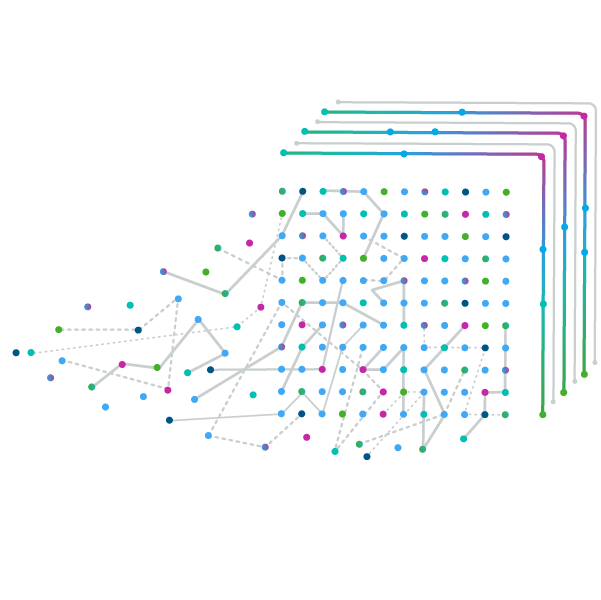-
Americas
-
Asia & Oceania
-
A-I
J-Z

EMEA Thought Leadership
Developing IQVIA’s positions on key trends in the pharma and life sciences industries, with a focus on EMEA.
Learn more -
Middle East & Africa

EMEA Thought Leadership
Developing IQVIA’s positions on key trends in the pharma and life sciences industries, with a focus on EMEA.
Learn more
Regions
-
Americas
-
Asia & Oceania
-
Europe
-
Middle East & Africa
-
Americas
-
Asia & Oceania
-
Europe
Europe
- Adriatic
- Belgium
- Bulgaria
- Czech Republic
- Deutschland
- España
- France
- Greece
- Hungary
- Ireland
- Israel
- Italia

EMEA Thought Leadership
Developing IQVIA’s positions on key trends in the pharma and life sciences industries, with a focus on EMEA.
Learn more -
Middle East & Africa

EMEA Thought Leadership
Developing IQVIA’s positions on key trends in the pharma and life sciences industries, with a focus on EMEA.
Learn more
SOLUTIONS
-
Research & Development
-
Real World Evidence
-
Commercialization
-
Safety & Regulatory Compliance
-
Technologies
LIFE SCIENCE SEGMENTS
HEALTHCARE SEGMENTS
- Information Partner Services
- Financial Institutions
- Global Health
- Government
- Patient Associations
- Payers
- Providers
THERAPEUTIC AREAS
- Cardiovascular
- Cell and Gene Therapy
- Central Nervous System
- GI & Hepatology
- Infectious Diseases and Vaccines
- Oncology & Hematology
- Pediatrics
- Rare Diseases
- View All

Impacting People's Lives
"We strive to help improve outcomes and create a healthier, more sustainable world for people everywhere.
LEARN MORE
Harness the power to transform clinical development
Reimagine clinical development by intelligently connecting data, technology, and analytics to optimize your trials. The result? Faster decision making and reduced risk so you can deliver life-changing therapies faster.
Research & Development OverviewResearch & Development Quick Links

Real World Evidence. Real Confidence. Real Results.
Generate and disseminate evidence that answers crucial clinical, regulatory and commercial questions, enabling you to drive smarter decisions and meet your stakeholder needs with confidence.
REAL WORLD EVIDENCE OVERVIEWReal World Evidence Quick Links

See markets more clearly. Opportunities more often.
Elevate commercial models with precision and speed using AI-driven analytics and technology that illuminate hidden insights in data.
COMMERCIALIZATION OVERVIEWCommercialization Quick Links

Service driven. Tech-enabled. Integrated compliance.
Orchestrate your success across the complete compliance lifecycle with best-in-class services and solutions for safety, regulatory, quality and medical information.
COMPLIANCE OVERVIEWSafety & Regulatory Compliance Quick Links

Intelligence that transforms life sciences end-to-end.
When your destination is a healthier world, making intelligent connections between data, technology, and services is your roadmap.
TECHNOLOGIES OVERVIEWTechnology Quick Links
CLINICAL PRODUCTS
COMMERCIAL PRODUCTS
COMPLIANCE, SAFETY, REG PRODUCTS
BLOGS, WHITE PAPERS & CASE STUDIES
Explore our library of insights, thought leadership, and the latest topics & trends in healthcare.
DISCOVER INSIGHTSTHE IQVIA INSTITUTE
An in-depth exploration of the global healthcare ecosystem with timely research, insightful analysis, and scientific expertise.
SEE LATEST REPORTSFEATURED INNOVATIONS
-
IQVIA Connected Intelligence™
-
IQVIA Healthcare-grade AI®
-
IQVIA AI Assistant
-
Human Data Science Cloud
-
IQVIA Innovation Hub
-
Decentralized Trials
-
Patient Experience Solutions with Apple devices
WHO WE ARE
- Our Story
- Our Impact
- Commitment to Global Health
- Code of Conduct
- Sustainability
- Privacy
- Executive Team
NEWS & RESOURCES

Unlock your potential to drive healthcare forward
By making intelligent connections between your needs, our capabilities, and the healthcare ecosystem, we can help you be more agile, accelerate results, and improve patient outcomes.
LEARN MORE
IQVIA AI is Healthcare-grade AI
Building on a rich history of developing AI for healthcare, IQVIA AI connects the right data, technology, and expertise to address the unique needs of healthcare. It's what we call Healthcare-grade AI.
LEARN MORE
Meet the IQVIA AI Assistant
Your new expert analyst is here. Be at the forefront of data-driven decision-making with a new generative AI tool that enables you to interact with our products and solutions like never before. Get results you can trust, faster.
LEARN MORE
Your healthcare data deserves more than just a cloud.
The IQVIA Human Data Science Cloud is our unique capability designed to enable healthcare-grade analytics, tools, and data management solutions to deliver fit-for-purpose global data at scale.
LEARN MORE
Innovations make an impact when bold ideas meet powerful partnerships
The IQVIA Innovation Hub connects start-ups with the extensive IQVIA network of assets, resources, clients, and partners. Together, we can help lead the future of healthcare with the extensive IQVIA network of assets, resources, clients, and partners.
LEARN MORE
Proven, faster DCT solutions
IQVIA Decentralized Trials deliver purpose-built clinical services and technologies that engage the right patients wherever they are. Our hybrid and fully virtual solutions have been used more than any others.
LEARN MORE
IQVIA Patient Experience Solutions with Apple devices
Empowering patients to personalize their healthcare and connecting them to caregivers has the potential to change the care delivery paradigm.
LEARN MOREIQVIA Careers
Featured Careers
Stay Connected

WE'RE HIRING
"At IQVIA your potential has no limits. We thrive on bold ideas and fearless innovation. Join us in reimagining what’s possible.
VIEW ROLES- Blogs
- The wonder of wearables and voiceprints
One-in-five US consumers now use wearables devices and apps to track their health stats. Fitbits, Apple Watches, and smart phone apps capture everything from heart rate, temperature, and balance to how much they sleep and how far they travel every day. With a little additional effort, consumers can use them to monitor their diet and exercise goals, track fertility, and medication use.
All of this wearable and voiceprint data can be of profound value to drug and device developers – if they have the ability to analyze it.
Wearable and consumer devices are meant to quantify the behaviors and physiology of the person using it. Depending upon the device, the readings can provide an early window into the onset of many diseases, including diabetes, asthma, heart conditions, and rarer conditions such as Parkinson’s, and ALS. Similarly, developers studying patients with genetic mutations could use wearables to monitor for subtle changes that indicate onset of the disease.
But in order to use these devises in clinical research, developers need to do more than hand out wearables, and start monitoring the data flow. The data they collect is only valuable if developers know what they are looking for and have the technology and expertise to analyze the data in real time so they can take meaningful actions in response.
That requires a wearable and voiceprint data analysis strategy that includes capturing a baseline set of data to start identifying trends of interest, then creating algorithms and tools to find and respond to these trends in the data that will be gathered from study participants.
An effective wearables and voiceprint data analysis strategy follows four key steps:- Capture data from a baseline patient population over a long enough duration to generate meaningful results. The population should be selected based on specific criteria of relevance to the research (asthma sufferers, patients with a genetic mutation for ALS, etc.). This early data collection process will be informative only, providing developers with enough data to validate health related trends, but not to treat the patients in the initial study.
- Use artificial intelligence/machine learning technology to analyze the wearable/voiceprint data and correlate it to health outcomes. The analysis will establish baseline healthcare metrics and identify trends that indicate impending health events. For example, patients who suffer heart attacks might consistently experience a higher than average resting heart rate in the days prior to the event.
- Train machine learning algorithms using the baseline data to identify trends that proactively predict health events. This training process should take into account the risk of false positives/negatives, and when possible look for supporting data to mitigate those errors, and/or to alert users of the risks. For example, one unexpected trip or stumble could be the result of clumsiness, whereas four unexpected tripping or stumbling events is a more likely indicator of early onset of ALS in patients with that genetic mutation.
- Create real-time response systems to alert patients and/or their physicians or clinical research investigators of the impending event. These alerts will allow them to take preventive actions that can reduce negative outcomes, and lower related healthcare costs.
Once this preliminary analysis work is done, developers can use data from wearable devices, voiceprints and the trained algorithms to expand their understanding of patients’ health in clinical studies. This can help them improve their ability to predict and respond to adverse events, more rapidly determine whether a drug or device is working in sub-populations in a study and help demonstrate the impact of a drug or device to regulators.
When to use wearables
When developers take the time to build a wearable/voiceprint data strategy, and work with partners who have the technology and healthcare data expertise to analyze results and train algorithms, it can have a powerful impact on many phases of the research journey.
In early planning stages, data from wearables/voiceprint can be used to identify indicators of disease that could accelerate earlier diagnosis, to monitor disease progression, and to identify data points that indicate the need for a second line therapy.
In human trials, wearable devices and voiceprints can provide real-time data about participants’ conditions, providing more robust information on the impact of a treatment, early warnings of adverse events, and/or proof that a treatment is or isn’t working. This can be used to mitigate the impact of negative health outcomes, and help developers identify sub-populations who are responding positively to the treatment.
After a drug or device is on the market, wearables/voiceprints can be used for post-market research studies, capturing real world data remotely from patient populations. It can be a cost-effective and easy way to monitor population health over the long term and could be used as comparator data to demonstrate the real world effectiveness of a treatment compared to other products, or among patients not using any device or treatment.
Start early
The potential benefits of wearable device data to developers is substantial, but they have to be confident they are capturing the right trends and mitigating the risks of false positive/negatives. Working with a technology partner who has experience in this space, can give them the confidence that their strategy is sensitive enough to identify meaningful trends that will inform their research throughout the development lifecycle.
If you’d like to learn more about how to better use this methodology for your product strategy, please contact us today: sos_support@iqvia.com.











